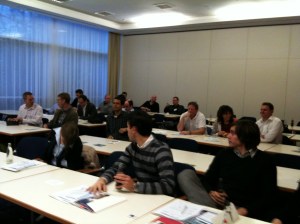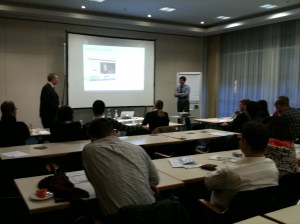Presentation at the Scrum Day in Düsseldorf December 2009, by Andrea Tomasini (agile42) and Dave Sharrock (be2)


Abstract of the speech
While the cost argument for moving traditional development teams offshore is well-known (and generally, still quite strong), the difficulty of maintaining high bandwidth communication with offshore teams using agile development methods has often been considered a substantial barrier to effective development. At be2, a Munich-based online international matchmaking service with an IT organisation based in Armenia, we choose to challenge these assumptions. With the help of agile42, a pilot agile project with two development teams was planned working with the product teams with the most critical business requirement, a complete rebuild of the core service estimated to take over six months before any major result was delivered to our customers. At the end of the pilot release sprint, the first changes to the site were live barely six weeks into the project. And as we start the final transition of the remaining teams, the pilot teams have continued development sprints with the result that the next release includes the majority of the planned design changes, just two months into development. We will present a review of the agile techniques we used, and those we adapted , to achieve a successful transition to scrum-based development. We will focus on the benefits and difficulties of building and maintaining offshore agile teams, and provide some insight into overcoming the challenges of offshore agile development.
Download: Offshore scrum: A case study in lean thinking


